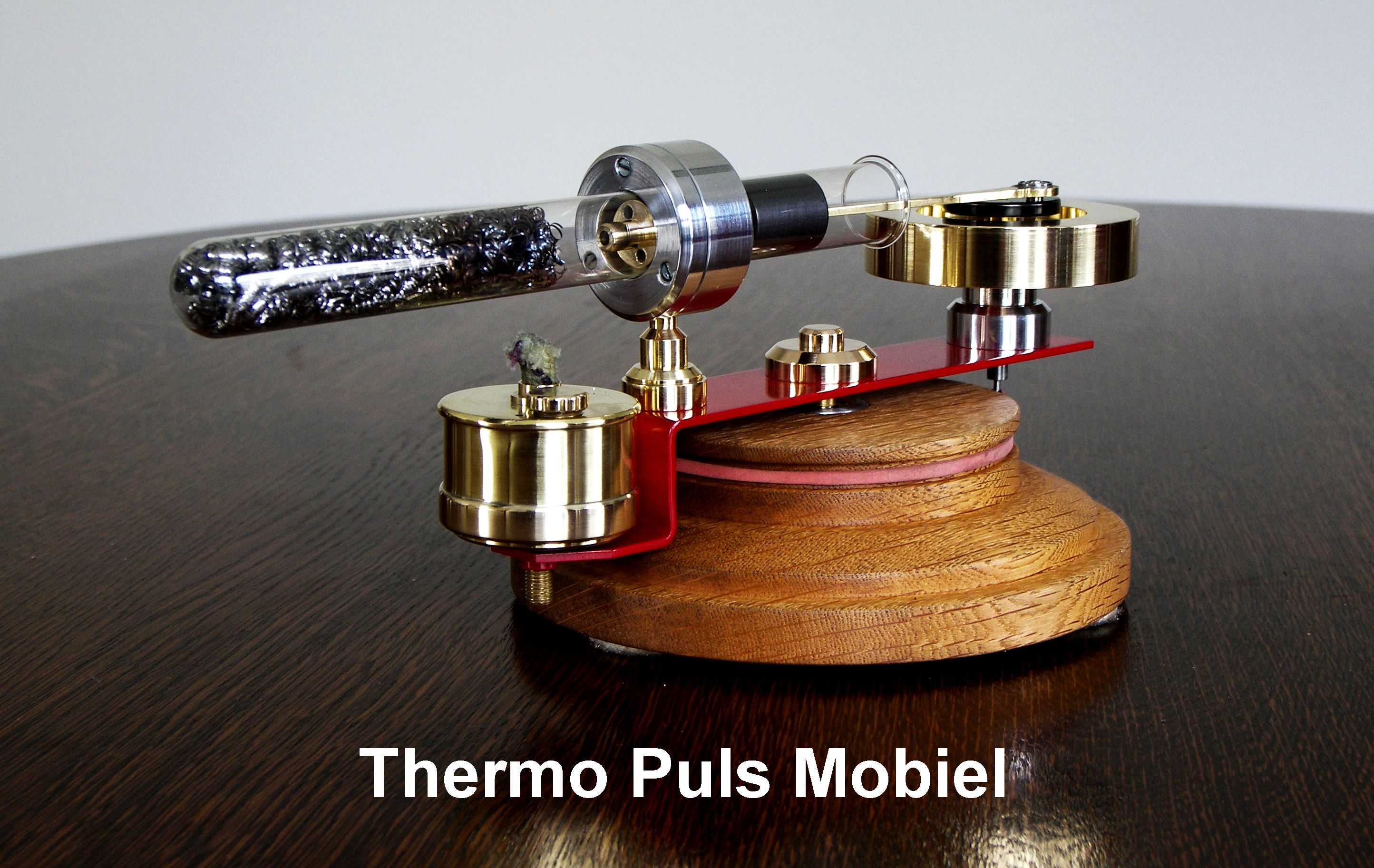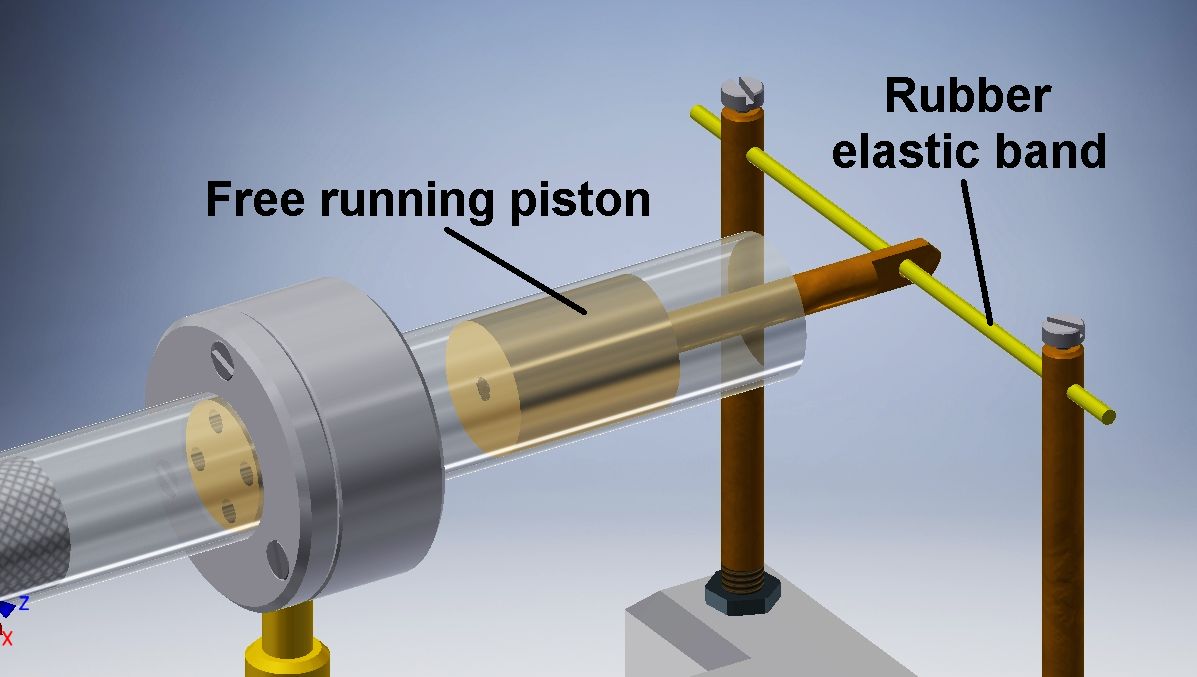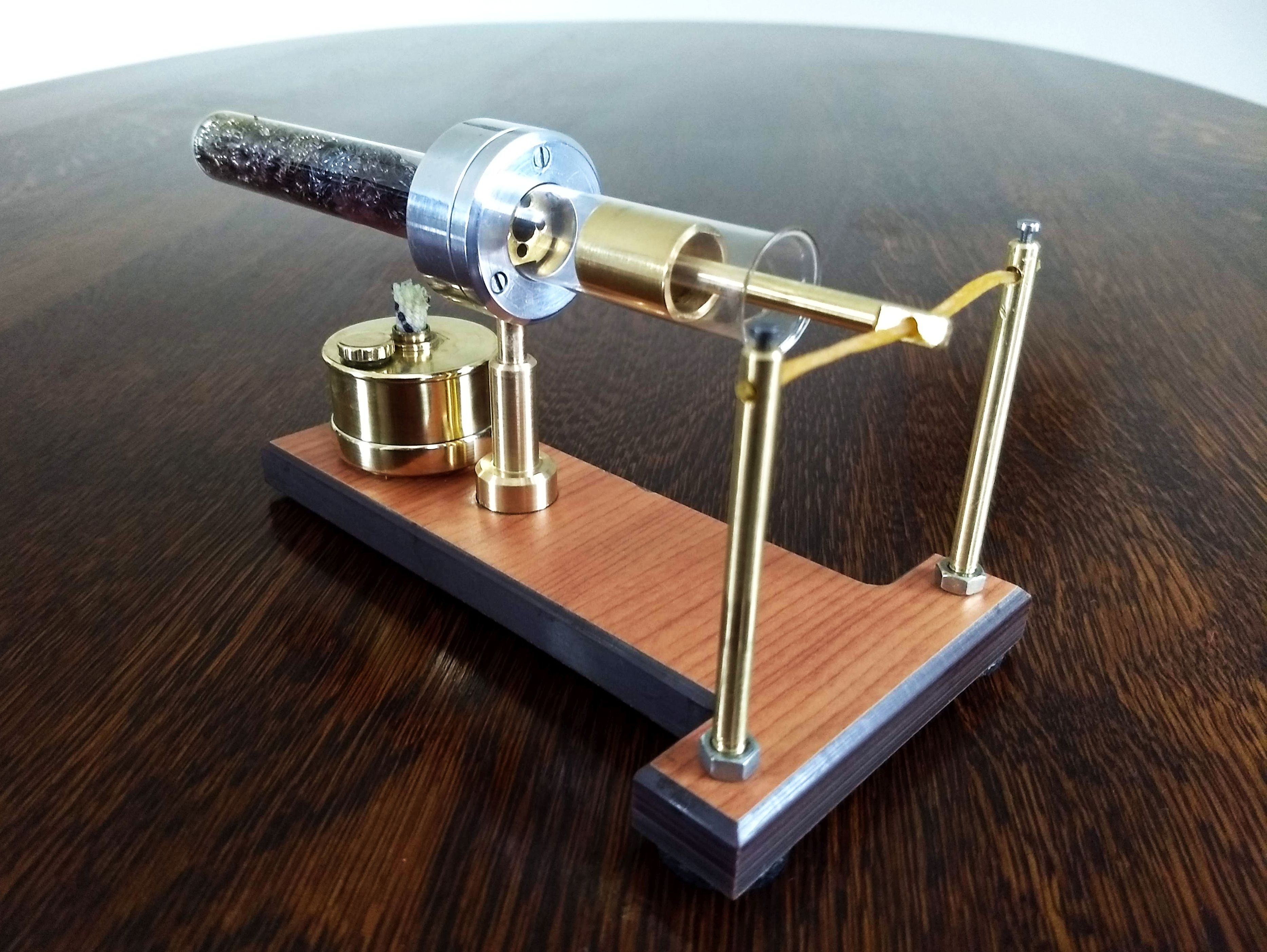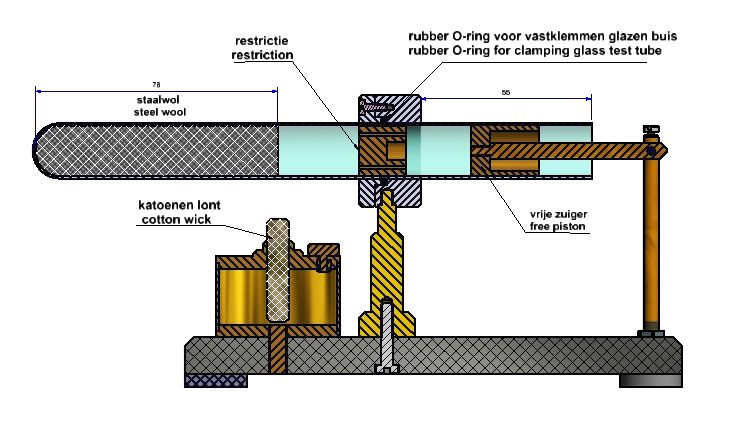Introduction.
A few years ago I designed and made a so-called "Lamina-flow" motor that rotates itself around a vertical axis and which I have therefore called "Thermo Puls Mobiel", see photo below and click here for the relevant page.
I now wondered whether it was also possible to make such a lamina-flow motor without crankshaft and flywheel, so with a free-running piston. I got my "Thermo Puls Mobile" out of the closet and started doing some experiments with it after removing the flywheel with the crankshaft.
Test results.
About 30 seconds after I ignited the alcohol burner I pulled manually on the piston shaft and found that there was indeed some piston movement, but the piston quickly stopped and occasionally was knocked out of the glass tube. It became clear to me that I had to couple some spring element to the shaft of the piston to keep the piston in the glass tube and at the same time make the piston oscillate. Various steel tension springs did not yield the desired result, but a piece from a normal household rubber elastic band that I stretched between two vertical pillars with a relatively low pulling force worked well:
Experimentally I determined that the optimal length of the rubber band should be about 70mm for the most reliable result. The motor ran perfectly as long as a flame on the burner heats the glass tube. With my laser tachometer I determine that the piston makes more than 1000 full strokes per minute. In this way a surprisingly simple motor was created, which may be of no practical use, but which satisfies the proverb that simplicity is the hallmark of truth. But behind this astonishing simplicity hides an intriguing and somewhat mysterious process, for the more physically oriented reader. Below is the video I made of this engine:
Video:
The process in the glass tube.
About this lamina process I can be brief and at the same time unfortunately also a bit vague. What exactly takes place in the glass tube is not yet 100% understood, in any case it has not been adequately described anywhere. I can say this because at the time I took part in an internet discussion with a group of people who are concerned with thermodynamic processes. Mainly Americans who bombard each other with theoretical and practical considerations. The process was initially thought to be similar to that of thermo-acoustic engines, the first patents of which date back to the 1950s and are well documented in theoretical and practical treatises. But it now seems certain that a different process is taking place here because, among other things, the glass tube would be much too short for a thermoacoustic process.
I must therefore limit myself here to what I think I understand, whether or not fully supported by the aforementioned discussion:
Pressure waves occur in the glass tube that, together with the piston, come into a kind of resonance. The air in the tube is cyclically under and overpressured, being heated in one place by a spirit burner positioned on the outside of the glass tube. This circular process apparently produces sufficient net energy to maintain the piston movement. The steel wool in the tube enhances the process, but exactly what role it plays is still one of the mysteries. My experiments show that it does not so much cool the air at the closed end of the tube, which was previously thought. Pretty sure the cyclical cooling of the air occurs in the part where the brass piston is located. The fact that one comes across with very different names for this type of engine such as Thermoacoustic Engine, Lamina Flow Engine, Pulse Tube, Mystery Engine, Moteur à hystérésis thermique, etc. reinforces the idea that there are more unproven ideas than hard facts. About the role of the steel wool, the restriction and the position of the flame of the spirit burner and also about its dimensions, I can refer to the page about the Thermo Puls Mobiel motor. At the time, I was only able to determine the optimal conditions through empirical experiments.Drawing plans.
I have made a CAD drawing plan package of this lamina motor with free piston, click here for a request.



